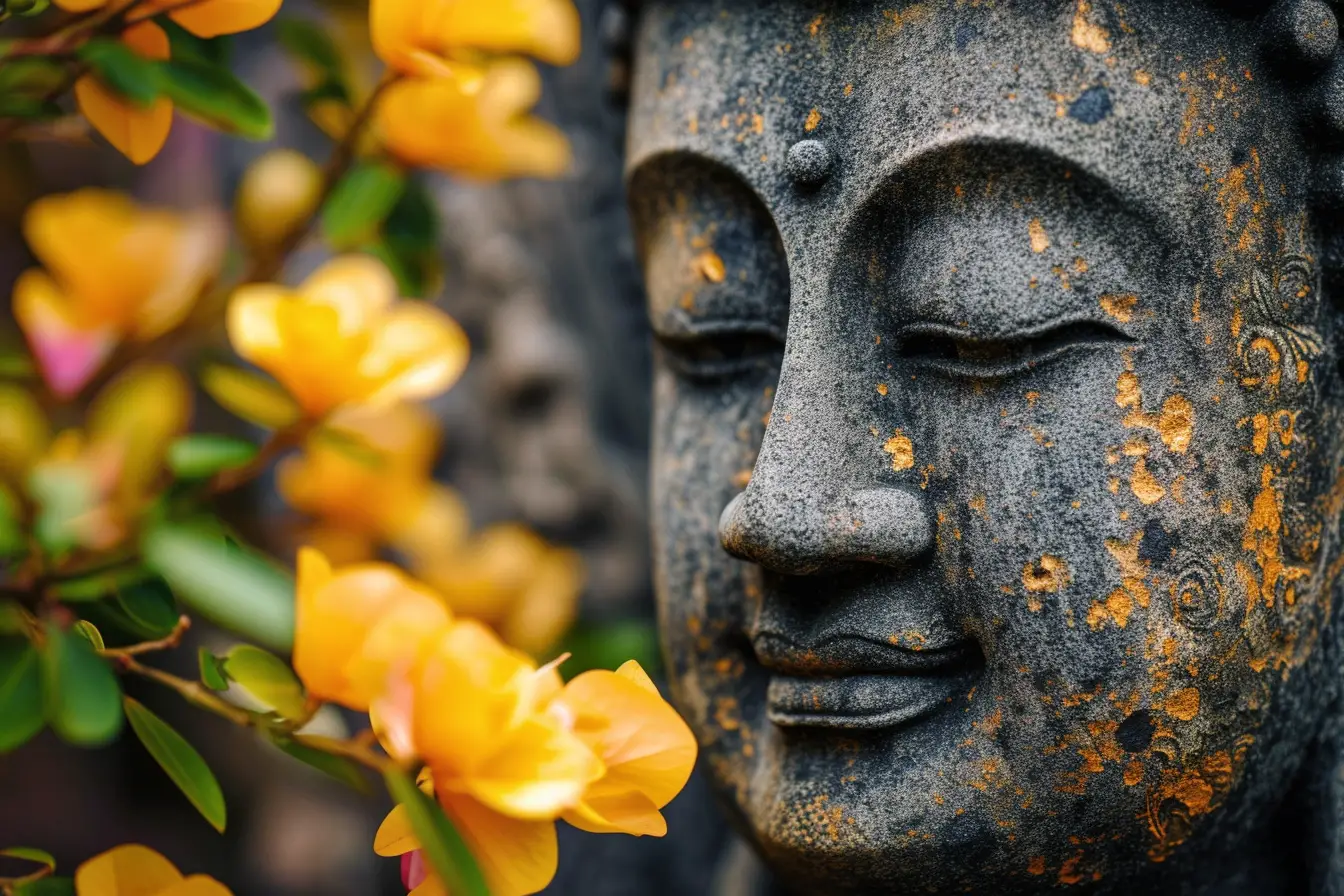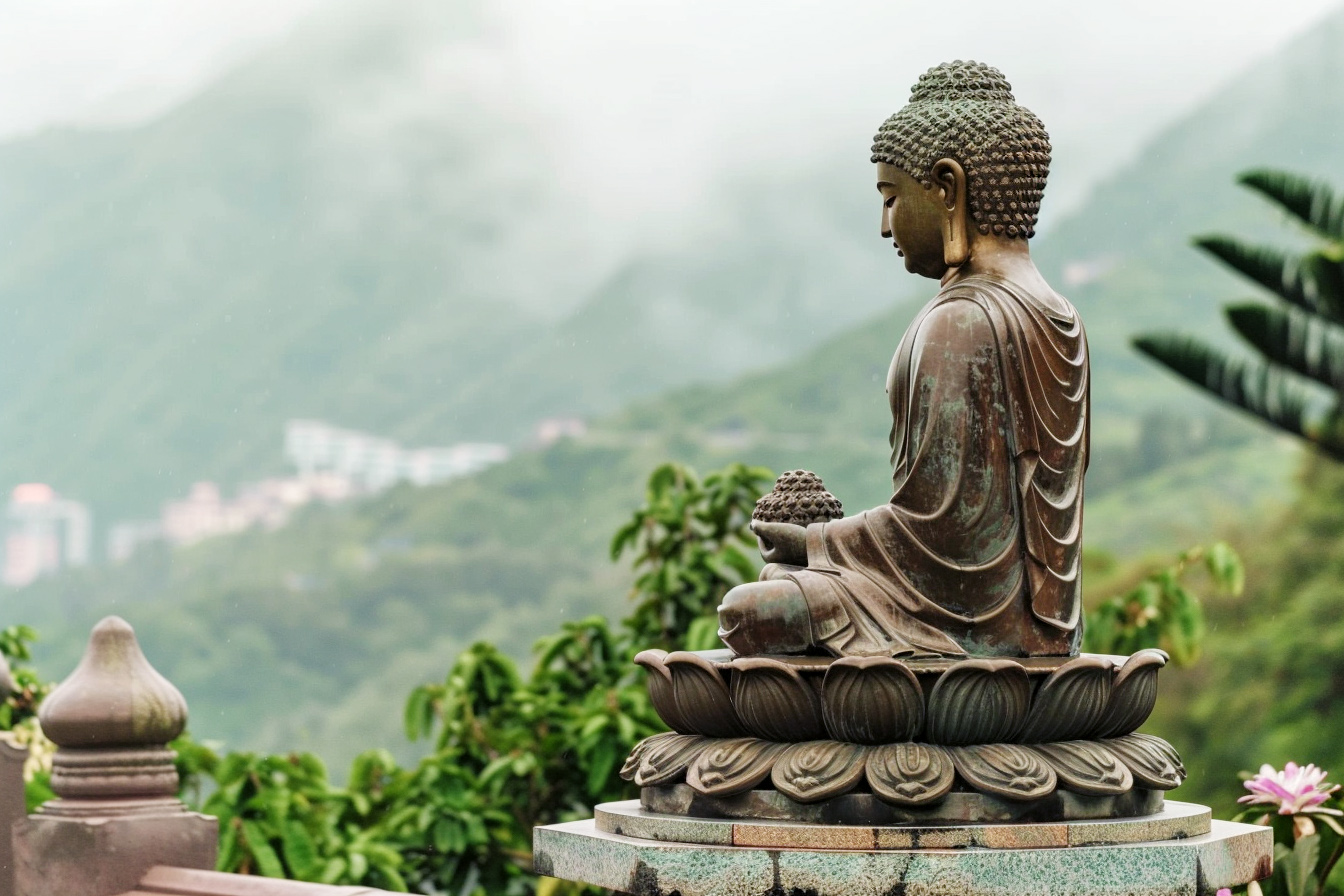Pursuing inner peace and freedom from suffering are central goals in the teachings of Buddhism. We can transform ourselves and achieve enlightenment by eliminating harmful attitudes and behaviors from our daily lives. This path encourages letting go of attachments, negative patterns, unhealthy relationships, and other aspects that only serve to cause pain.
We can lead lives of greater fulfillment and serenity through mindfulness, self-reflection, and deliberate change. Here, we will explore ten key areas Buddhism encourages us to delete from our world and practical tips for doing so. Freeing ourselves of these ten things creates space for joy.
1. Understanding Attachment in Buddhism
In Buddhism, attachment refers to clinging to people, objects, expectations, and other transient things in a way that leads to suffering. We crave more when we become overly attached to material items or unhealthy relationships out of desire or insecurity. This traps us in an endless cycle of wanting and losing. The Buddhist path encourages us to develop healthy detachment. This means embracing impermanence as part of life and not overly identifying with things we could lose. By letting go of attachment, we discover inner freedom.
2. The Impact of Materialism on Inner Peace
Modern research confirms what Buddhism has asserted for centuries — materialism robs us of peace. The constant pressure to accumulate possessions feeds anxiety. No matter how much we acquire, it is never enough. Further, excessive possessions can become distractions that shift our focus away from personal growth. To find true happiness, we must delete the insatiable desire for more and instead focus on non-material sources of meaning.
3. Practical Steps to Reduce Material Attachment
Start releasing extreme attachment to possessions by decluttering your environment. Donate unused goods, downsize possessions, and curate your items so they serve a real purpose. Adopt an anti-consumerist mentality focused on experiences over things. When you feel compelled to shop excessively, halt and mindfully examine the emotions and insecurities driving the urge. Keep only what you need, stop wanting what advertising sells, and find fulfillment through simplicity.
4. Recognizing Harmful Thoughts
Buddhism identifies destructive emotions as the internal causes of misery. Anger, envy, pride, and related states distort perceptions when they arise unchecked. By deleting negative thought patterns before they spiral, we gain control. This involves consciously monitoring our mind’s endless judgments, criticisms, and other disempowering narratives. Once recognized, we can work to transform thoughts toward the positive.
5. Buddhist Techniques for Thought Transformation
Buddhists employ specific methods for shifting harmful thought patterns before they erupt into damage. For example, loving-kindness meditation cultivates compassion toward self and others. This practice involves silently repeating positive mantras, wishing happiness upon people, and neutralizing negativity. Buddhism also emphasizes catching our biased perspectives and consciously reframing situations into opportunities for patience and understanding. Such techniques help delete toxic thinking.
6. Cultivating Positive Mindfulness
In place of negative mental chatter, Buddhists work to build positive mindfulness habits. This means observing thought streams non-judgmentally and letting distracting ruminations float consciously. Once centered in the present, intentionally send loving wishes to self and others. Appreciate simple moments of beauty around you to further instill mindfulness. Over time, the mental reflex shifts from criticism to gratitude through consistent practice by replacing negative thought patterns with positive ones.
7. Identifying Toxic Relationships
We all likely have a few unhealthy relationships we would benefit from removing. But social conditioning makes this problematic. Buddhist thought examines connections via the metrics of respect, authenticity, and mutual growth. Relationships failing here drain energy and reinforce toxicity. Warning signs include frequent misunderstandings, overly draining interactions, or dynamics where one person repeatedly attempts to change the other through criticism. Such relations produce unhappiness on both sides.
8. Buddhist Wisdom on Letting Go
Buddhism acknowledges ending relationships pulls at our deepest fears of loss and loneliness. But it also teaches that staying in harmful relations wreaks more significant long-term damage. Human bonds fluctuate naturally. Clinging cannot resurrect dead connections or redeem abuse. With compassion, we must mindfully accept impermanence and allow relationships to their natural course without attachment. This philosophy empowers us to walk away despite the initial grief involved in significant life changes.
9. Fostering Healthy Connections
Deleting damaging relationships makes space to cultivate mutually supportive ones instead. Seek kind friends who celebrate your authentic self without attempting to mold you. Open your heart, but guard it through healthy boundaries that filter manipulation. Communicate assertively to resolve conflicts quickly before resentment builds. If you sense a relationship risking your growth and stability, take the initiative to repair it through non-judgmental discourse or move forward if toxicity persists. You deserve people who join your journey toward inner peace.
10. The Concept of Tanha (Craving) in Buddhism
tanha refers to thirst or the passionate desire for temporary phenomena — stimuli providing brief satisfaction but ultimately lacking deeper meaning. Such temptations tantalize by promising contentment but soon twist into clinging. Buddhism teaches overindulging in tanha leads down an endless path chasing fleeting fulfillment, preventing lasting happiness. By mindfully examining over-eager cravings, we can delete detrimental ones obstructing inner peace. Discipline helps restrain harmful desires so higher meaning shines through.
Balancing Desires with Mindful Living
Buddhism acknowledges erasing all desire proves impossible and unnecessary. Healthy ambition helps us actualize our potential while contributing to others. Skillful means involve identifying specific destructive desires by the harm they cause to the self and others. Over-the-top cravings for drugs, wealth, and attention indicate inner distress. Less intense desires also require moderation, from wanting the next smartphone to career advancement. Mindfully balance external pursuits with internal development for fulfillment.
Case Study: Rupa’s Transformation
Rupa constantly compared herself to peers, friends, and celebrities, feeling inadequate if she did not reach externally defined goals. She relentlessly pursued material signs of success while rarely pausing to appreciate the simpler joys in life. Her mind was fixated on negative commentary about her body, talents, and direction.
This pressure to perfection manifested in chronic stress, and Rupa’s days overflowed with frantic business unconsciously aimed at proving worth. She often lost sleep, ruminating over conflicts, her anger erupting in hurtful outbursts. Deep down, Rupa feared change and being alone.
Eventually chronic anxiety peaked after a breakup and job loss simultaneously unearthed Rupa’s repressed insecurities. Finally, she started examining destructive mental patterns causing distress. Retreating from daily noise, Rupa meditated on impermanence, practicing radical self-acceptance regardless of external conditions.
Gradually, Rupa deleted relationships and activities, draining energy without reciprocal support. She minimized needless possessions, spending more time in nature and with supportive friends. Rupa forgave past resentment and focused on inspiring those around her. Her outlook shifted from lack of consciousness to genuine self-love. Rupa embraced life’s messy uncertainties as adding beauty. Soon, she uncovered her unique creative talents while feeling connected to something timeless in the present. Rupa found peace by simply experiencing each fleeting, perfect moment.
Key Takeaways
- Delete attachment to possessions, expectations, and unhealthy relationships to clear space for inner peace to emerge
- Catch and transform negative thought patterns before they spiral into destructive emotions
- Skillfully manage excessive desires and busyness to avoid suffering from chasing temporary fulfillment
- Radically accept life’s challenges and embrace changes courageously as opportunities for self-development
- Release needless habits of comparing against others or demanding perfection in yourself or world
- Approach conflicts with compassion while setting boundaries around harm
- Flow with impermanence gracefully without clinging to false perceptions of stability
Conclusion
Implementing Buddhist life principles transmutes suffering into joy. While deleting damaging mindsets and behaviors proves challenging, the resultant freedom infuses meaning into each moment. We reconnect to dormant inner wholeness.
Liberation unfolds organically by focusing on cultivating wisdom, practicing forgiveness, deepening relationships, and elevating consciousness over materialism. We come home to our true luminous nature. Clarity surfaces on how contributing our unique talents make the world better.
Ultimately, Buddhism encourages us to compassionately embrace falling short of ideals as part of being beautifully human. Progress follows a spiral rather than a linear path. By loving ourselves and others at every stage, we live fully while awakening power to help all beings end suffering.












Leave a Reply